You may not find this terribly rewarding unless you're included here, so this is a good time for casual and random browsers to turn back before they get too caught up in the sweep and majesty of the proceedings and can't let go.
There was a time when we could leap into the car and drive an hour over the Grand Saint Bernard for another visit to Italy -- 3, 4, 5 times a year. These days it's a lot more complicated, and more expensive, of course.
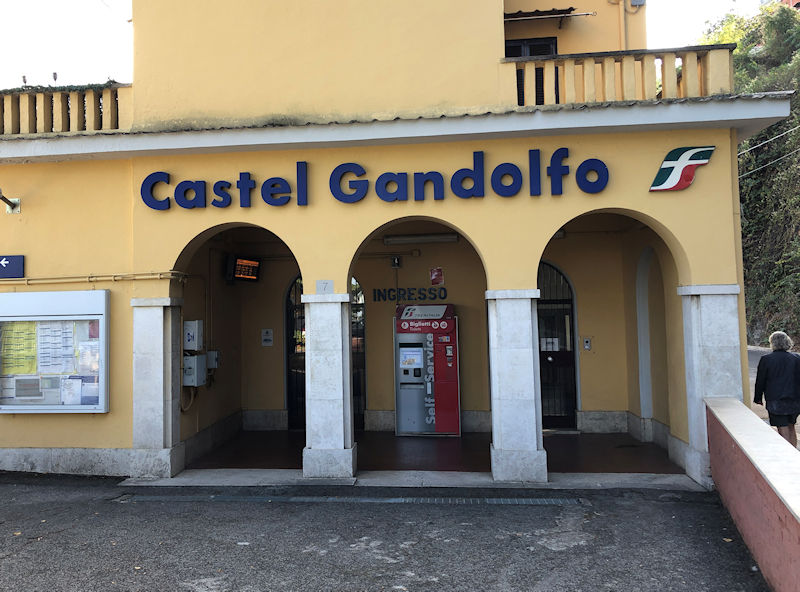
That's the train station in Castel Gandolfo: we're not actually arriving here, this was taken a few days later as we were walking down from our B+B to Lago Albano. Actually we hired a taxi to get us up here from Fiumicino. The regional train does run up here from the Rome Termini station, but this station's not functioning anymore, nor is the ticket machine. (You buy your tickets at the local tobacconist's, or pay on board.)

This is our B+B, called Il Biancondio, looking out over the lake. It came equipped with a nice cat that hangs out on the premises, owned by no one but fed by everyone. Including us (it was so grateful for some dinner leftovers that it left a dead bird for Kristin outside our door the next morning).

Lago Albano was formed by a volcanic crater in the Alban Hills, traditionally associated with the semi-legendary ancient city and/or religious site called Alba Longa, which was destroyed by the early Romans in the mid-7th century BC and its inhabitants transferred into Rome itself.
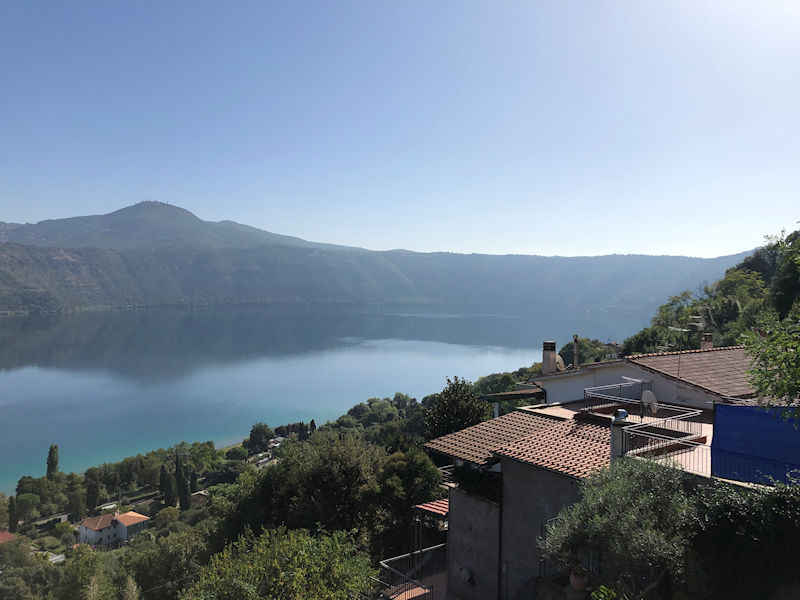
The lake, fed only by rain, is about 2 miles long and 1.4 miles wide, with a depth of 170 meters (560 ft). Monte Cavo (elev 950m) is on the horizon, another ancient volcano that was the site of an important temple to Zeus in very ancient times (subsequently a medieval hermitage and monastery, latterly an hotel used as a communications base by the German army until captured by the US infantry in June 1944).
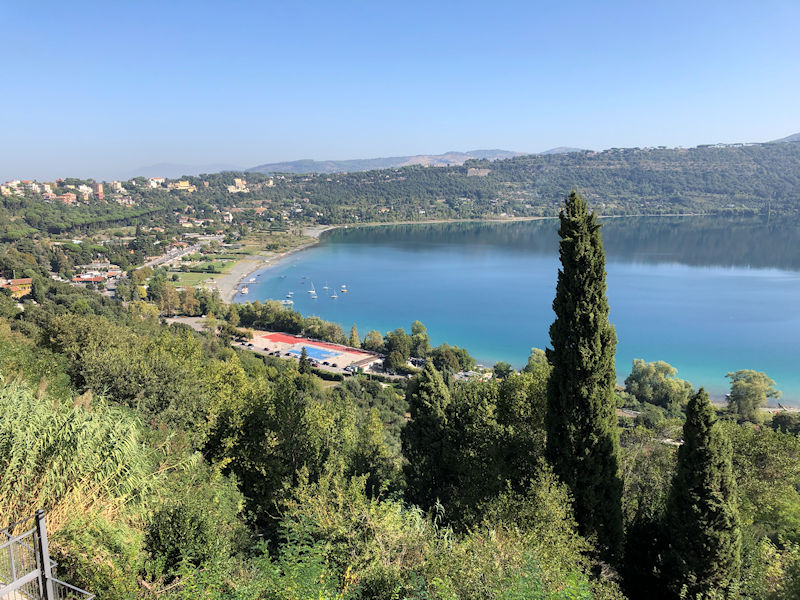
The town of Castel Gandolfo, about 25 km (16 mi) southeast of Rome in the Lazio region, is dominated by the Papal Palace and its related borgo along the southwestern rim of the crater -- that belongs to the Holy See, but the surrounding town of about 9,000 inhabitants extends farther round the rim and down the western slope, as well as round the lower end of the lake seen here with its many restaurants and beach facilities.
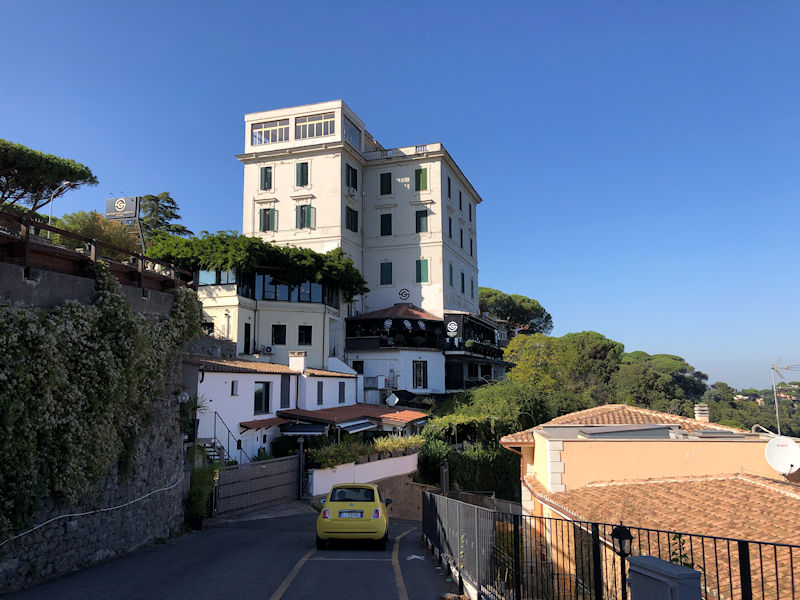
We're lodged here near the crater's rim, on this little deadend road, dominated by that huge, pretentious Ristorante Gardenia, which we didn't like the looks of and never gave a try.
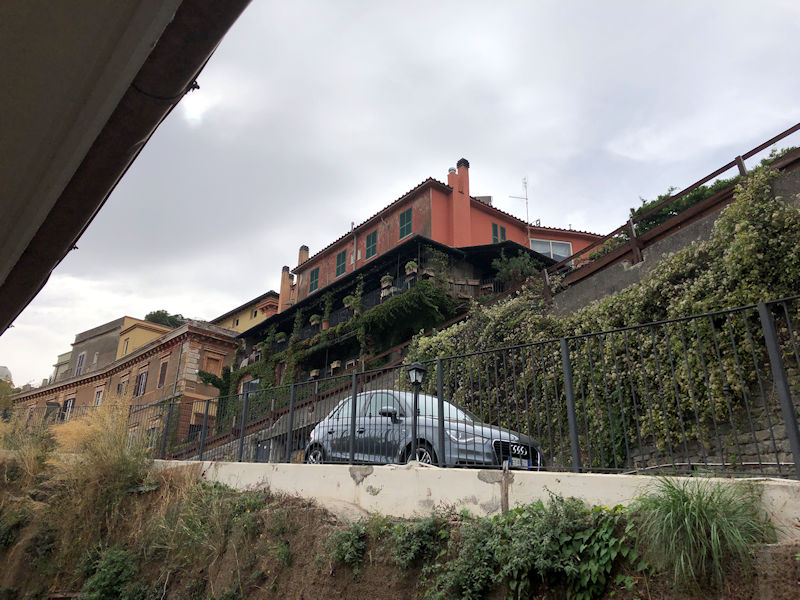
But just above us, there is the Ristorante Pagnanelli, with its beautiful interiors and multiple balconies, its friendly staff, and its excellent menu. We showed up there five or six nights during our stay in town.
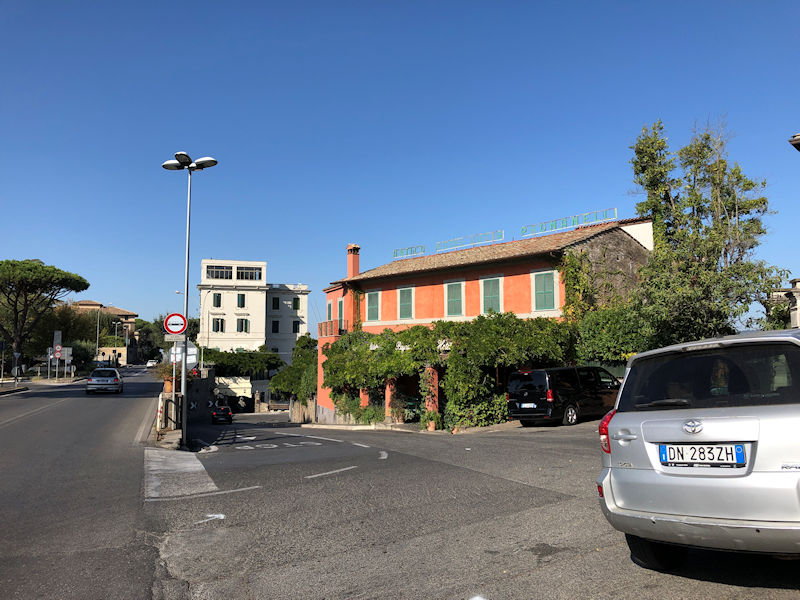
Just above us there is the main road through town, along the crater rim, and the Antico Ristorante Pagnanelli, family-owned since 1882 (and apparently still in the same family), sits at the top of the Via Antonio Gramsci which winds down past the rail station, doubling back as the only road down to the lake on this side of it. There is another road up the far end of the beach area and a tunnel under the ridge halfway along the shoreline out to the wider world.
(The road is named for the Italian Marxist philosopher, leader of the Italian Communist Party, imprisoned by Mussolini from 1926 until his death in 1937.)
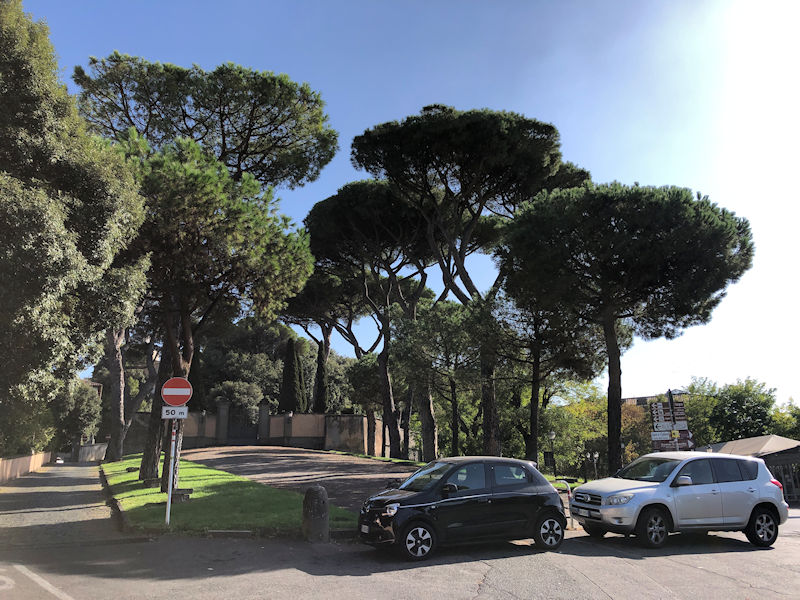
Here, in front of the Pagnanelli, we are looking up at one end of the papal grounds. We've discovered that we can't get hold of a hired car round here until next week, so now we're investigating other options.

Like this bus station

But those don't look much like normal city buses.
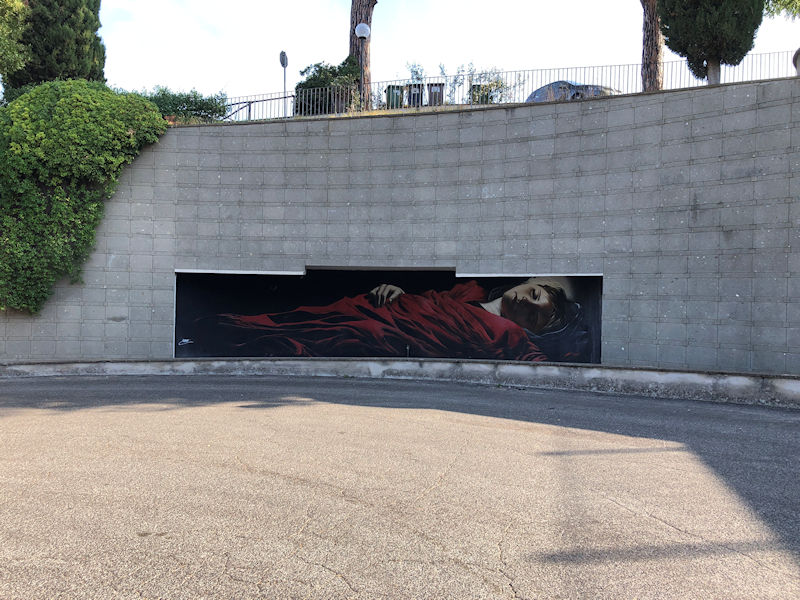
Good grief
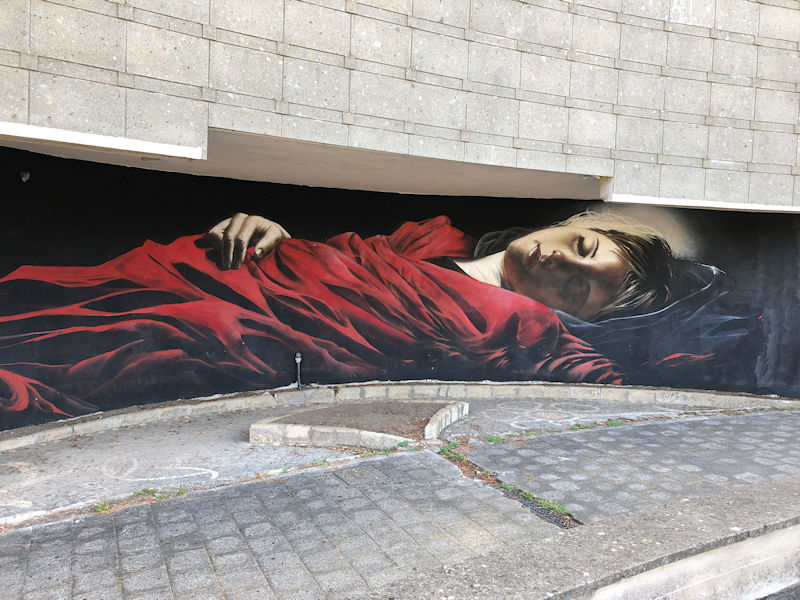
Presumably there's a story there.
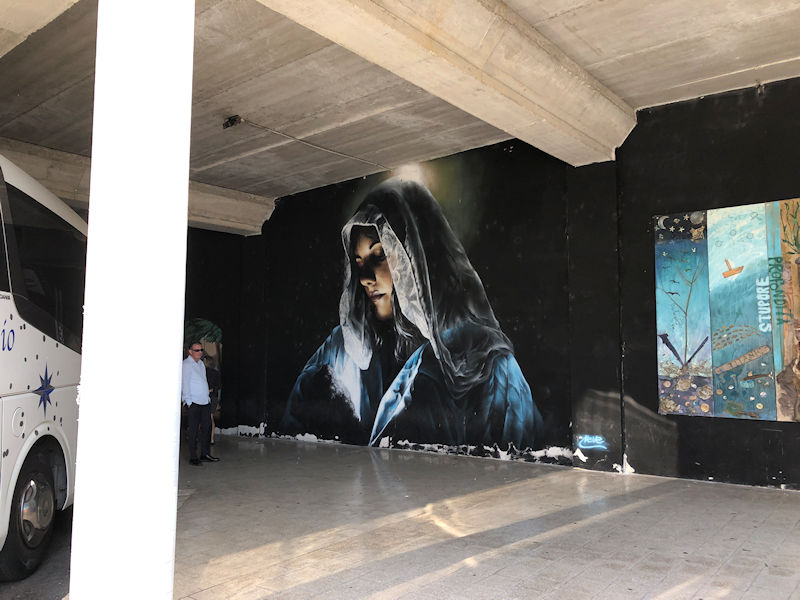
In fact, it's not a bus station, it's a parking lot for tourist buses. A very attractive one, let it be said. But regional city buses do run through town fairly frequently and more or less regularly, so we were able to get to supermarkets in the next town when necessary (there are none up here nearby, only small convenience alimentari).
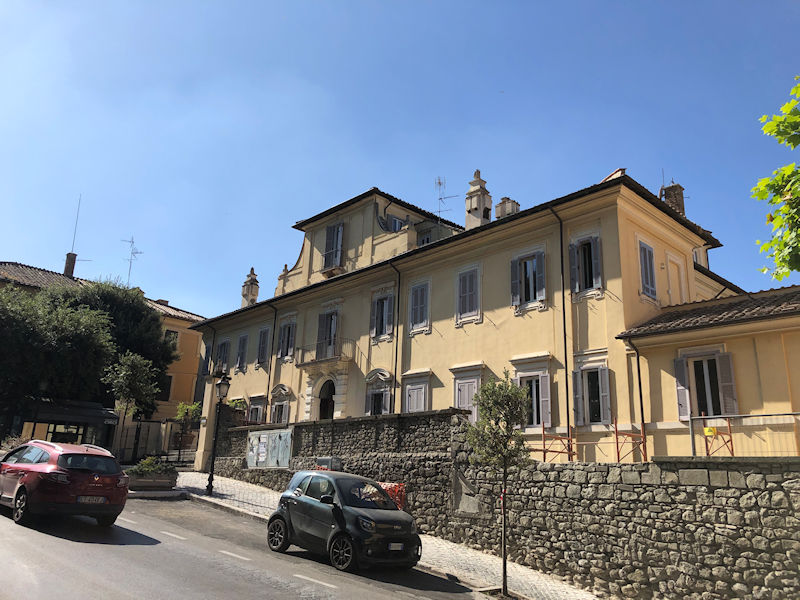
It's time to scope out the Papal Palace and related exciting prospects.
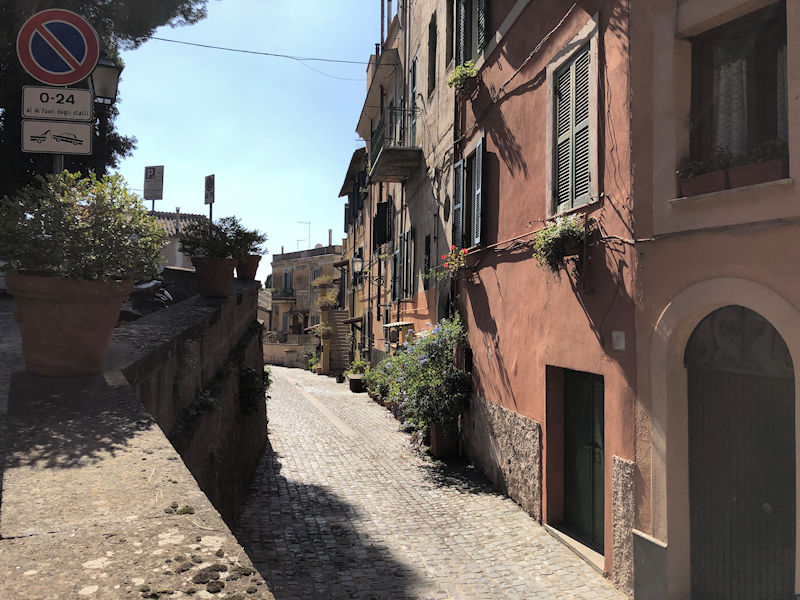
The neighborhood just below the crater's rim
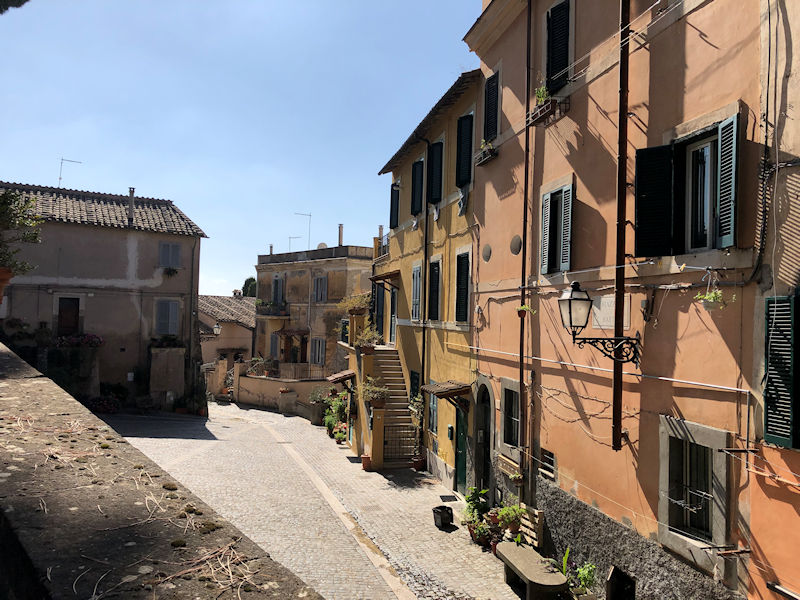
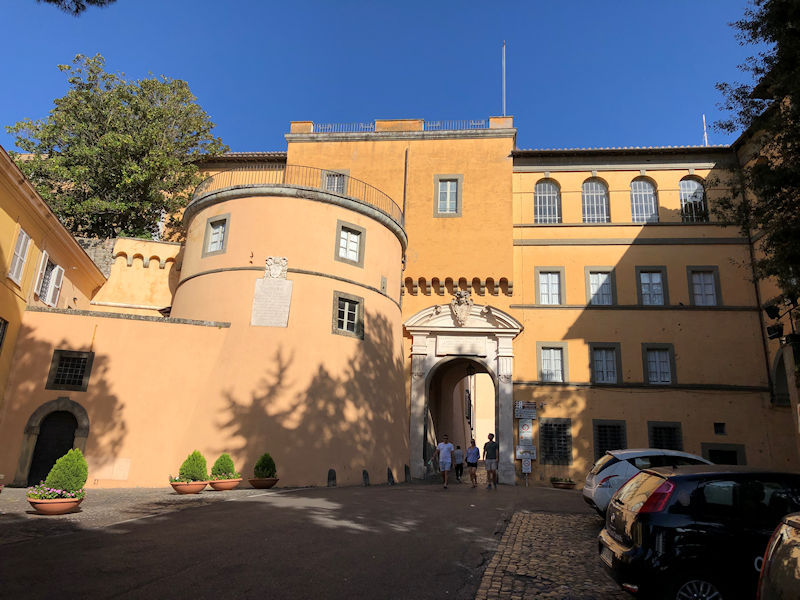
The entrance to the papal properties, the borgo, gardens, etc. From that gate onward, this is extraterritorial papal property, since Mussolini's agreement with the Holy See in 1929.

That's the 'Apostolic Palace of Castel Gandolfo', the summer residence and vacation hideout for the Pope and his entourage since the late 16th century. More about that when we return to take the tour.

This is the Piazza della Libertà in front of the 'Palazzo Pontificio', with the Church of St Thomas of Villanova looming.
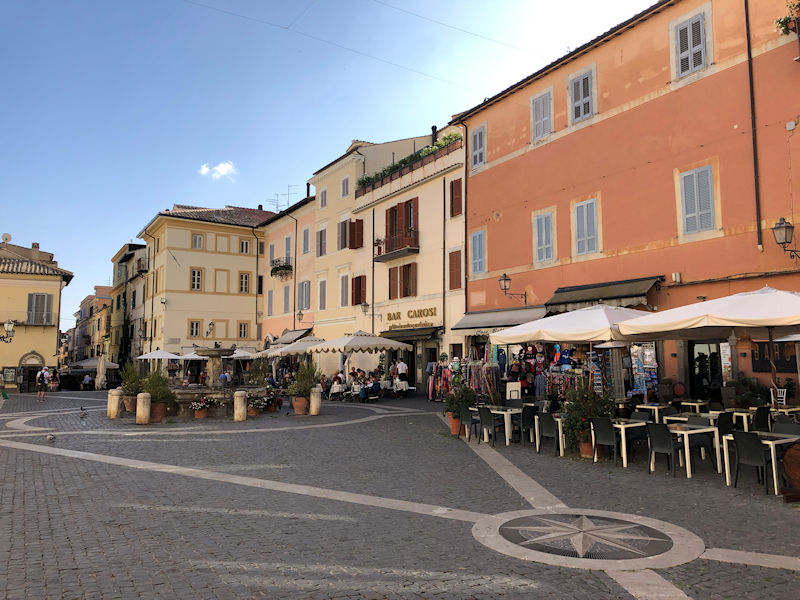
The street running off at the far end of the piazza is called the Corso della Repubblica, running a few hundred meters populated mostly by tourist shops and small restaurants spilling onto the street. A smaller road runs parallel to the main one, off to the left, both of them within the borgo.
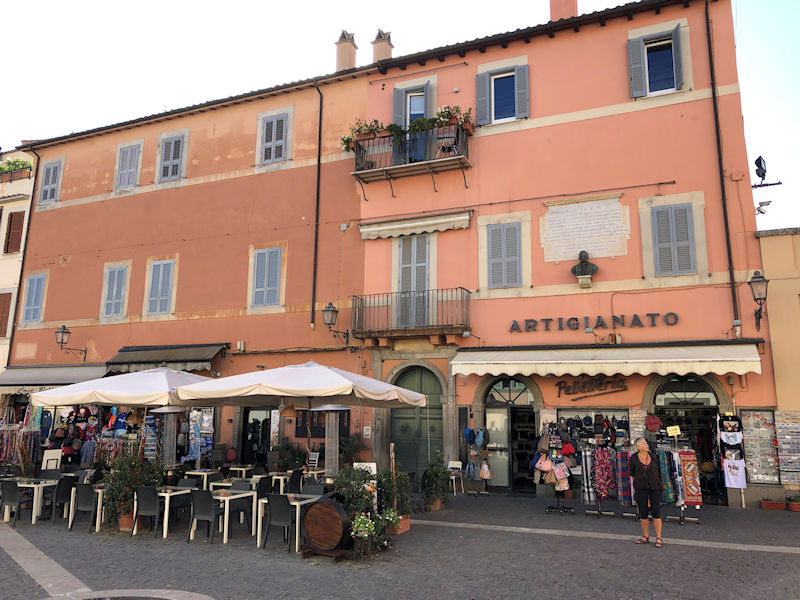
Gift and souvenir shops in abundance

A pleasant fountain

The Chiesa di S. Tommaso da Villanova was ordered up by Pope Alexander VII Chigi, designed by Bernini and rebuilt in 1658-1662 over an older parish church of San Nicola. The Spanish priest Thomas of Villanova, evidently quite a miracle worker, had just been canonized and the Pope wanted to highlight him as a symbol of the life of works of charity to oppose the Lutheran focus on 'faith alone' for salvation.

The whole place is meant to be kept simple, on a Greek cross plan, but the elaborate high altar in stuccowork is by Bernini's pupil Antonio Raggi.
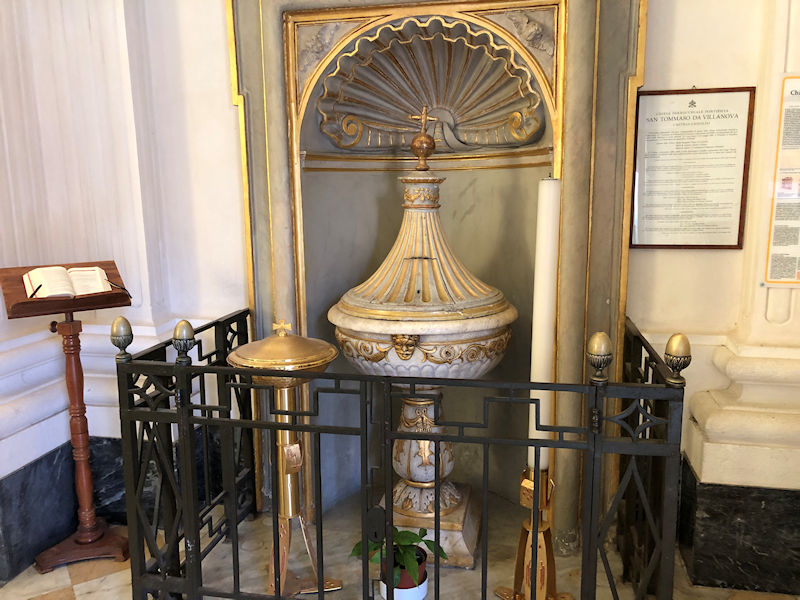
A cute little font. We didn't find too much else in here to grab our attention, to be honest, so we continued our scoping mission round town a bit more.
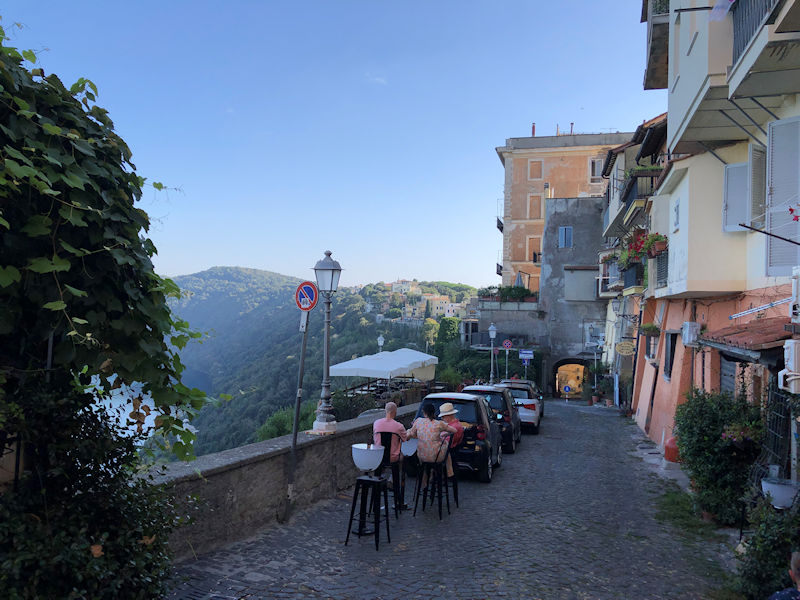
There are also a few more restaurants along this outer side of the borgo, and this is . . .
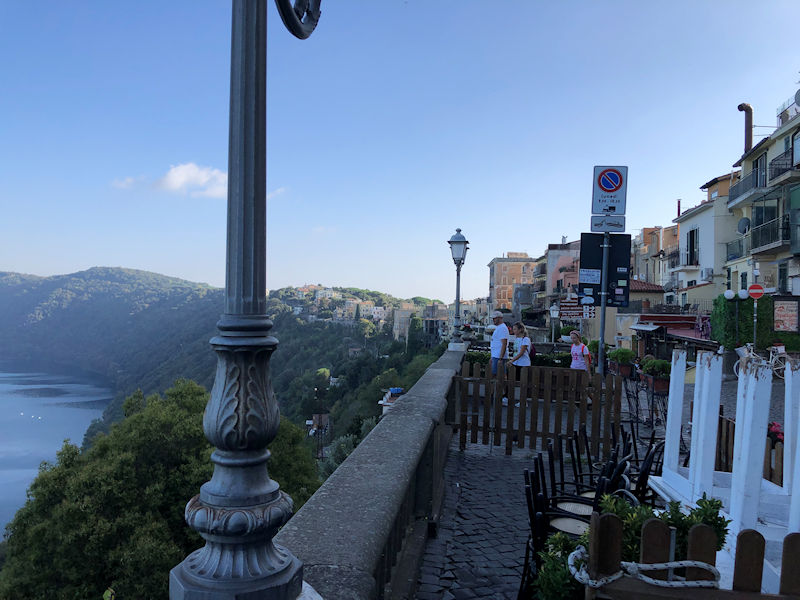
. . . called the Belvedere, overlooking the lake along the Via Palazzo Pontificio that runs outside the church buildings back down towards our flat. The distant buildings farther along the crater rim belong to the much more substantial city of Albano Laziale, a more commercial centre with about 42,000 inhabitants spilling down off the hillside to the southwest.
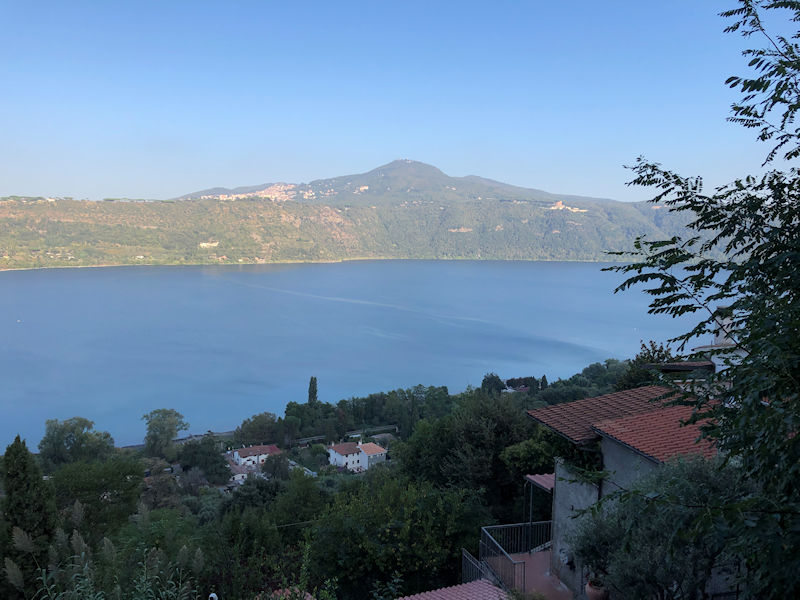
Down off the left side of Monte Cavo is the village of Rocca di Papa, the 'Pope's Fortress', ever since Pope Eugene III Pignatelli lived there in the mid-12th century.
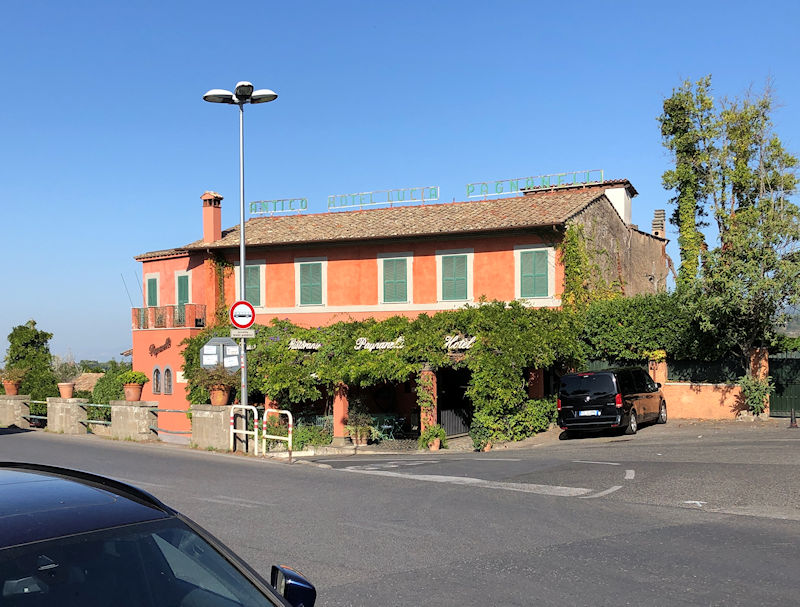
The 'Antico Hotel Lucia Pagnanelli' (as written along the roofline) -- we're here to make a reservation for this evening.

The restaurant is clearly a very popular one, and making a reservation just sounds like a good idea.
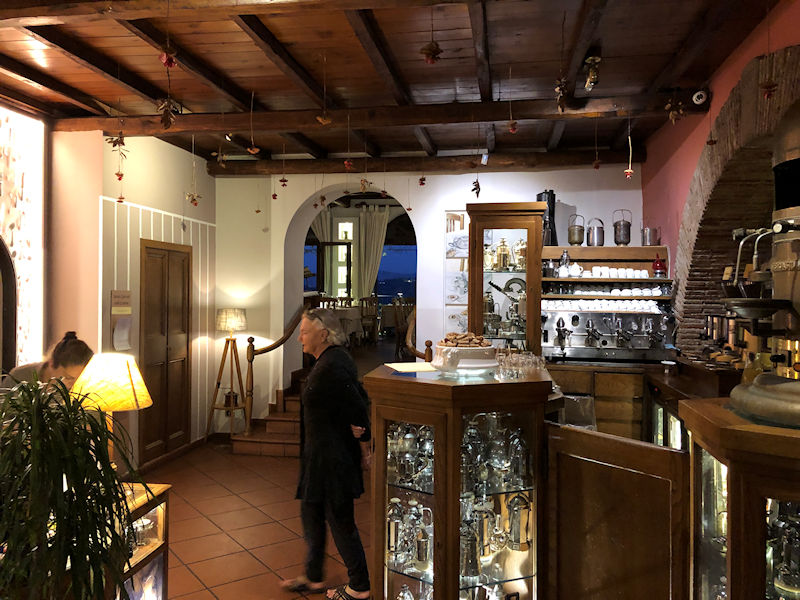
Though, in fact, we showed up every night at our usual 7 p.m. dinnertime, and the crowds only began swarming in around 8.
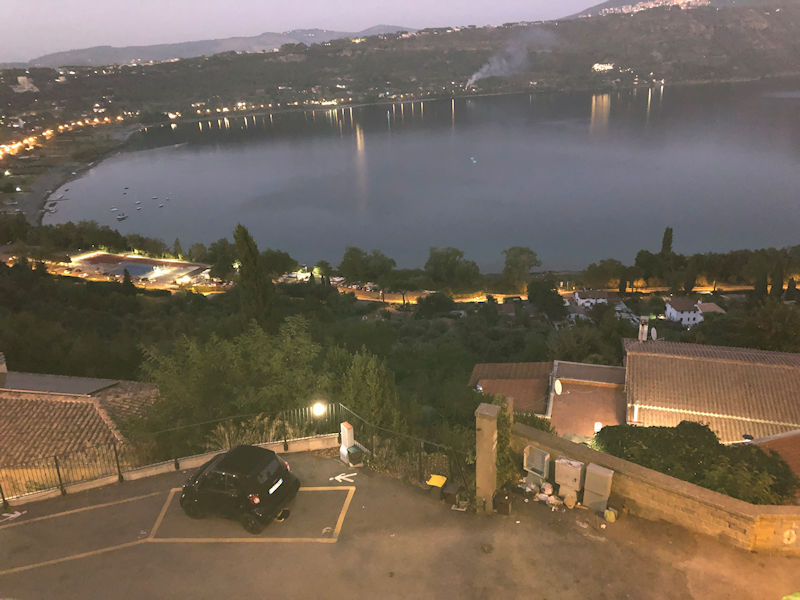
Dusk over the lake, from the restaurant balcony
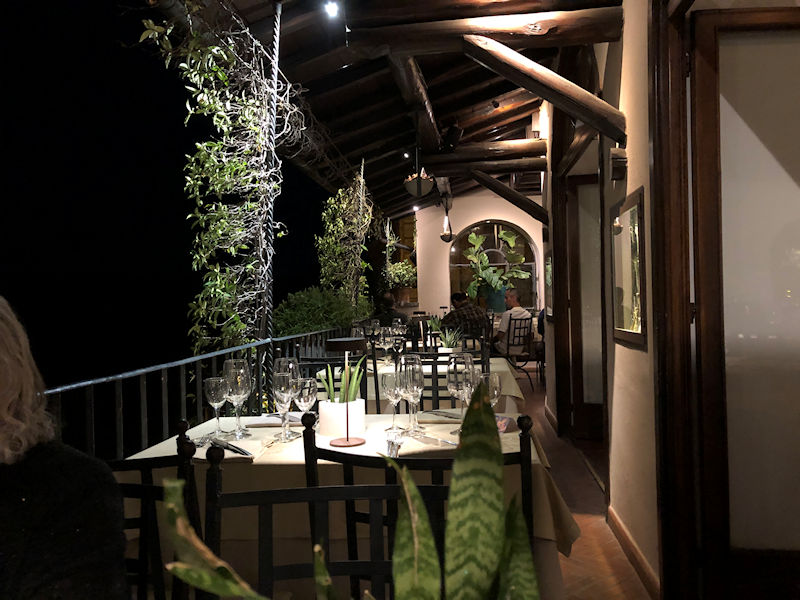
And we've got the place virtually to ourselves for a good hour or so.
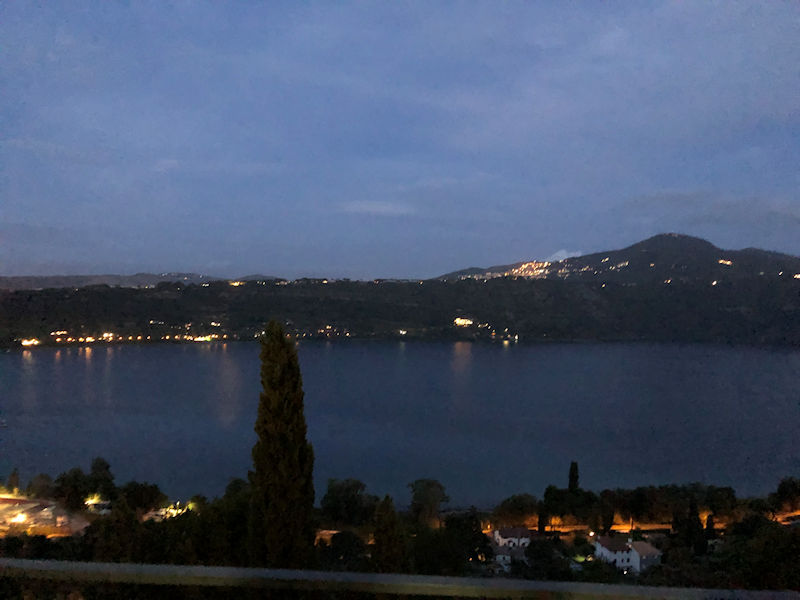
Tomorrow's another day . . .
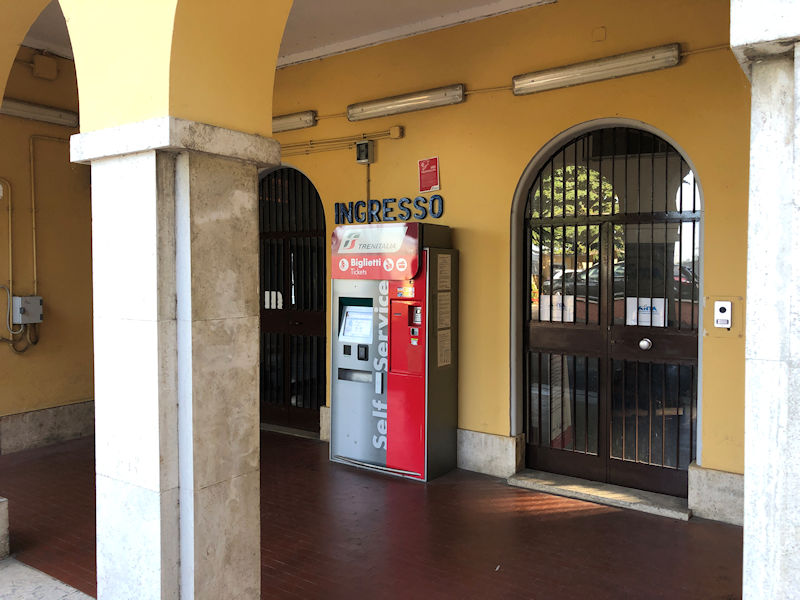
. . . a day in which (carless) we'll walk down the Via Antonio Gramsci, past the train station (with the 'Self-Service' ticket machine that doesn't work), to a . . .
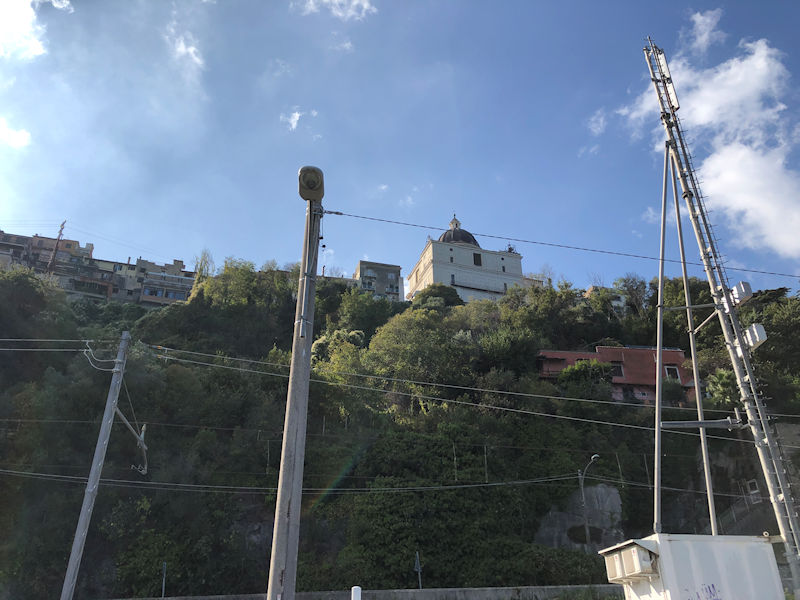
. . . sobering view of what's in store for us getting back up there.
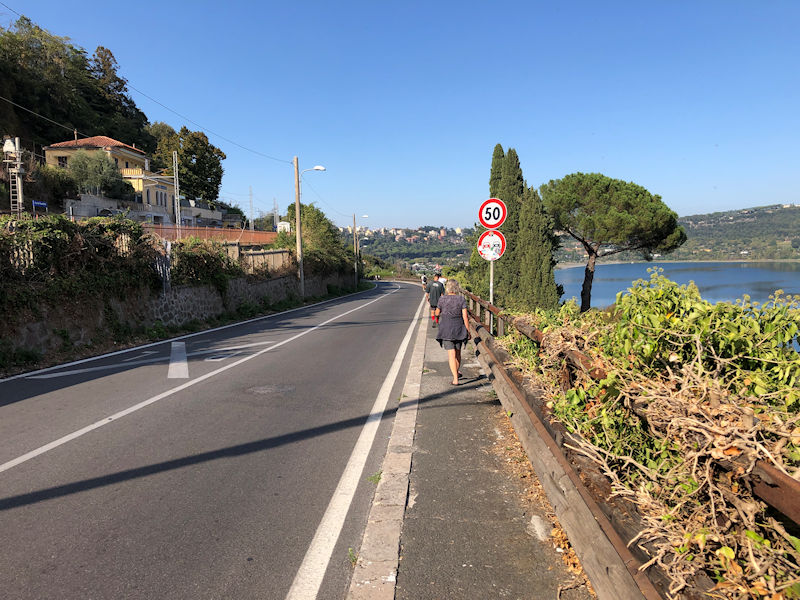
It's a little like a pedestrian parade here when the train from Rome pulls in.
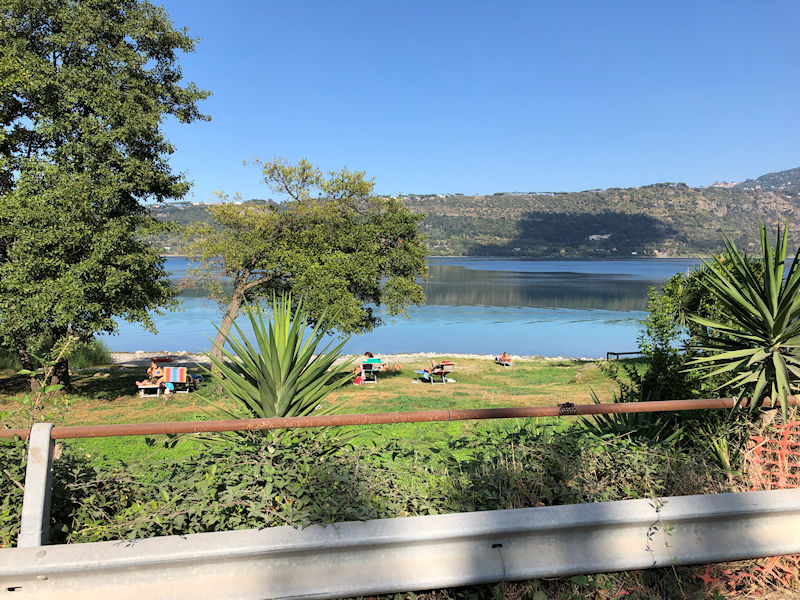
Down to the lake level, we're walking along the Via dei Pescatori towards the serious beachy area.
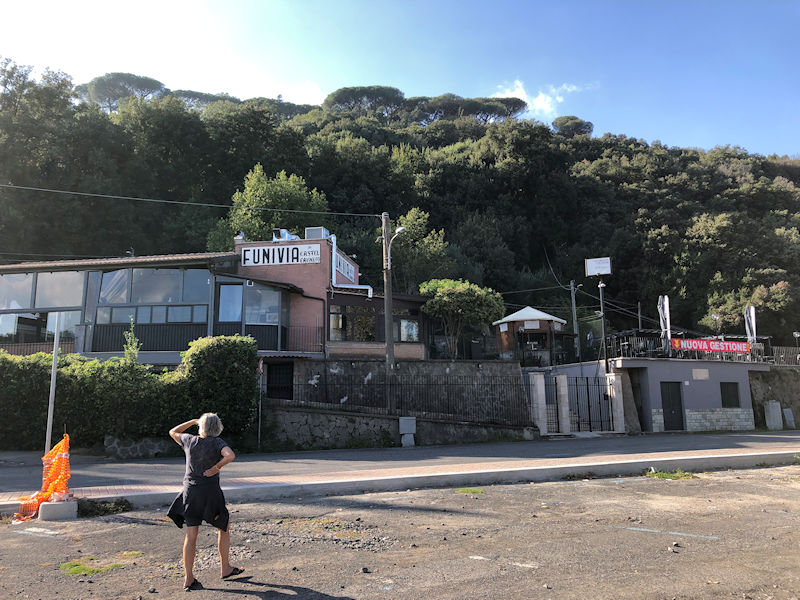
Hearts leapt with joy to discover a funicular back up the hill, which, however, turned out to be seasonal, and therefore closed.
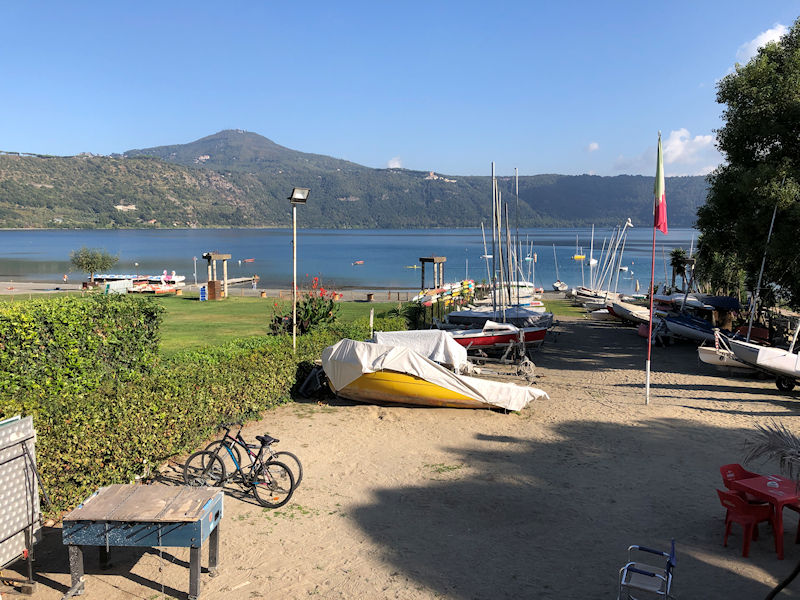
There really are very few people around, but it is mid-October after all.

A fair amount of tanning going on on the lawns
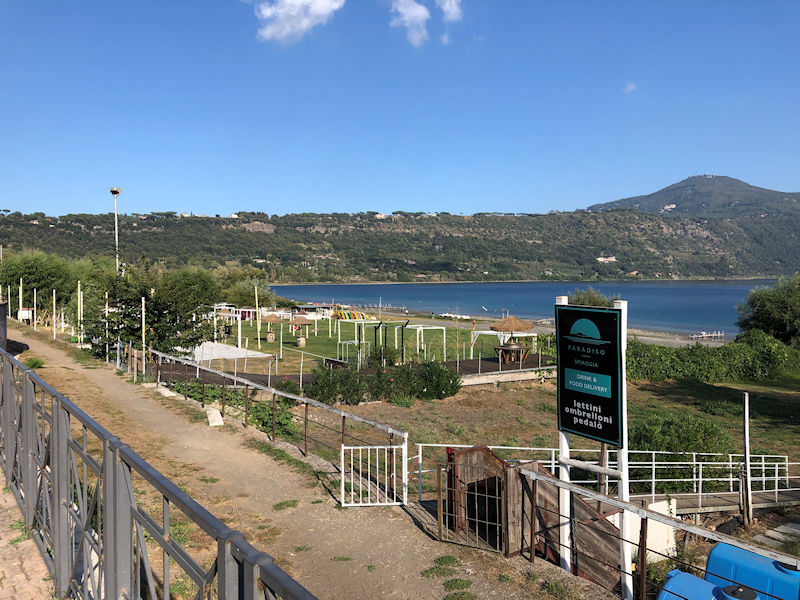
The pedalos are locked up, but there are a fair number of windsurfing sailboards and small sailboats beached along here or anchored just offshore.
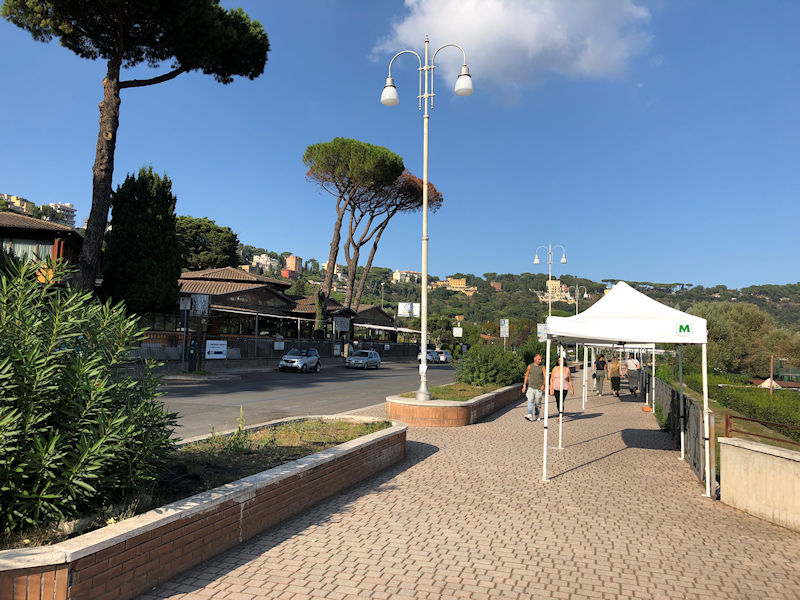
Broad sidewalks; it's easy to imagine them crowded with an exuberant summer clientele.

We're already contemplating the walk back up onto the ridge.
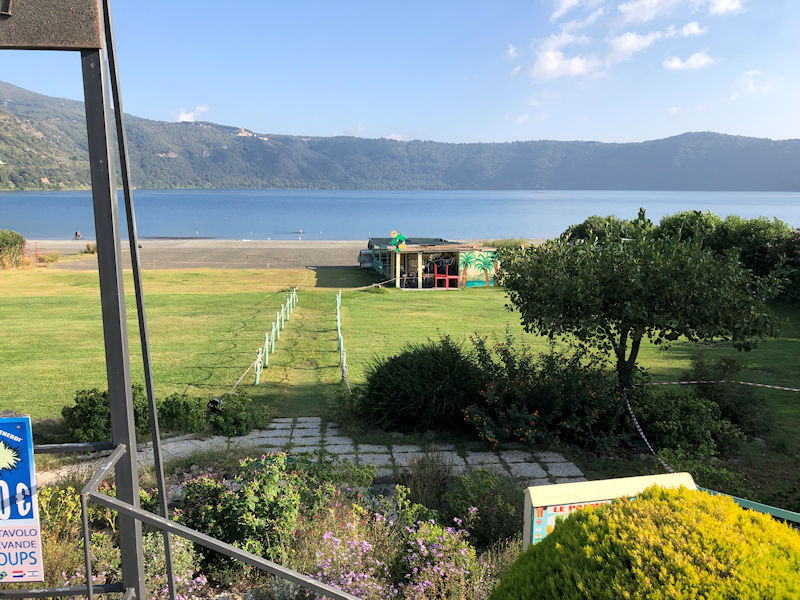

That's a long way up there, ummm . . .
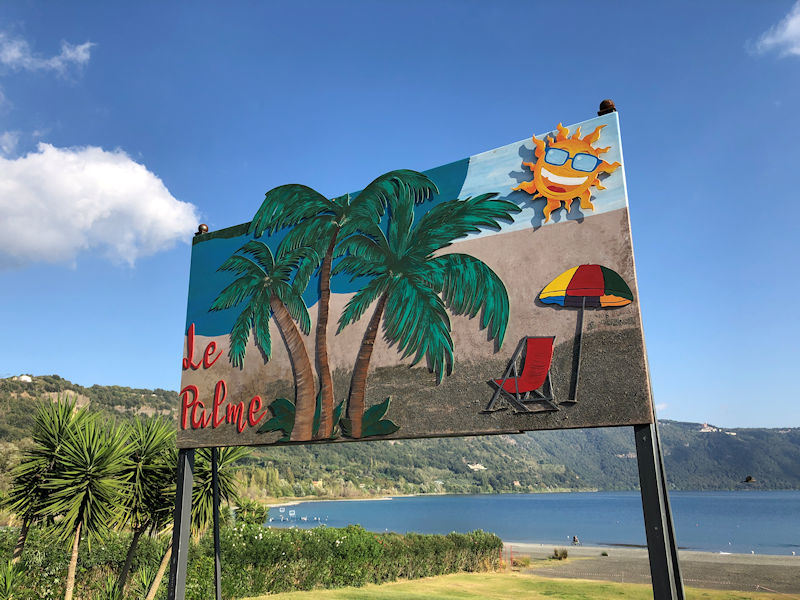
Summer Fun
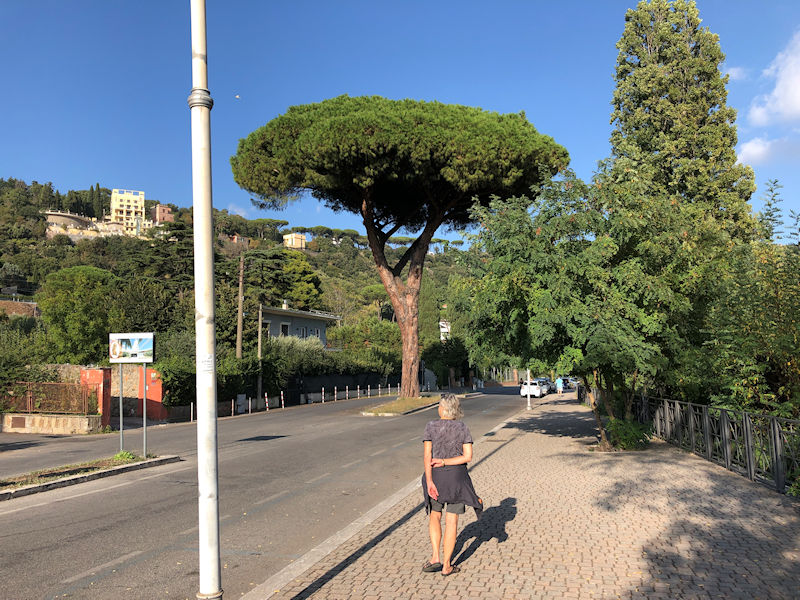
There is a little one-lane road starting up to the left at the far side of that tree, and Kristin has taken the very optimistic notion that it will lead us straight up onto the ridge without our having to trudge all the way back up the main road past the rail station.
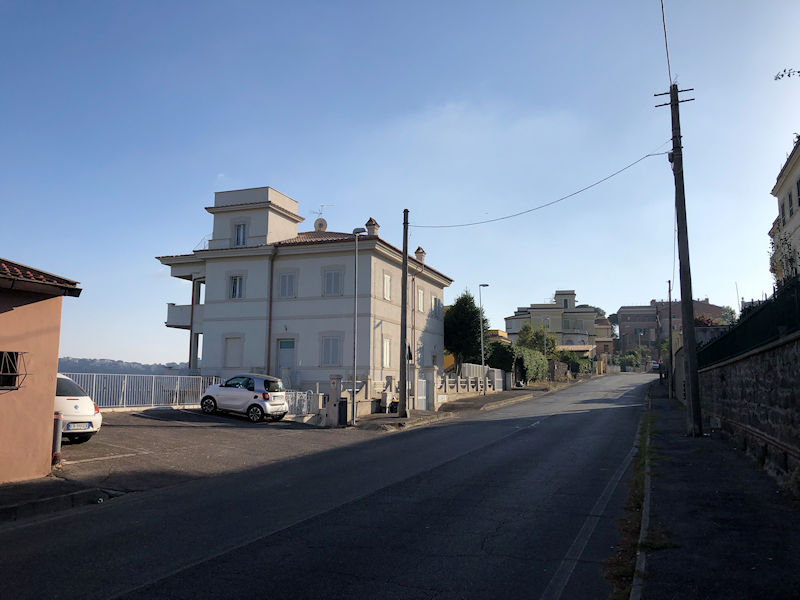
In fact, though not an especially easy uphill march, it did lead us back up the hill just a mile from home. Top marks for Kristin on that one.

Some cute houses along the way back into town
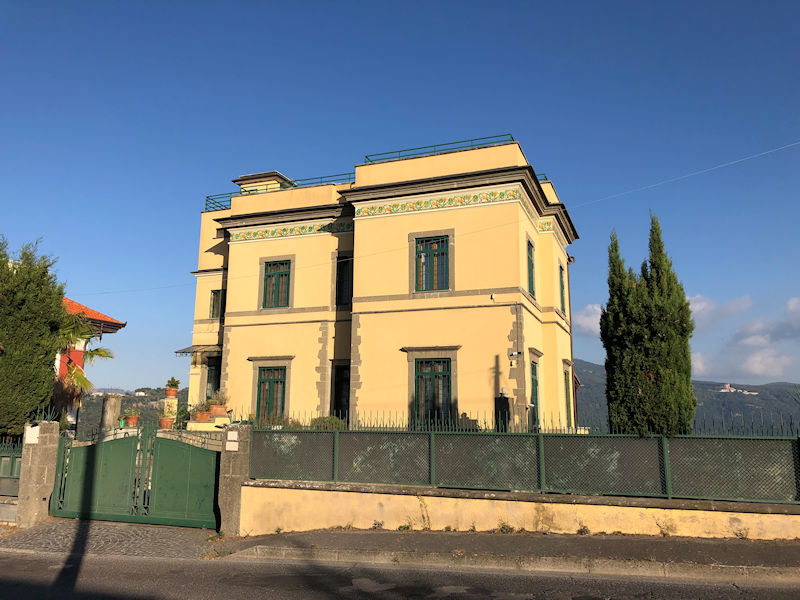
Like this one
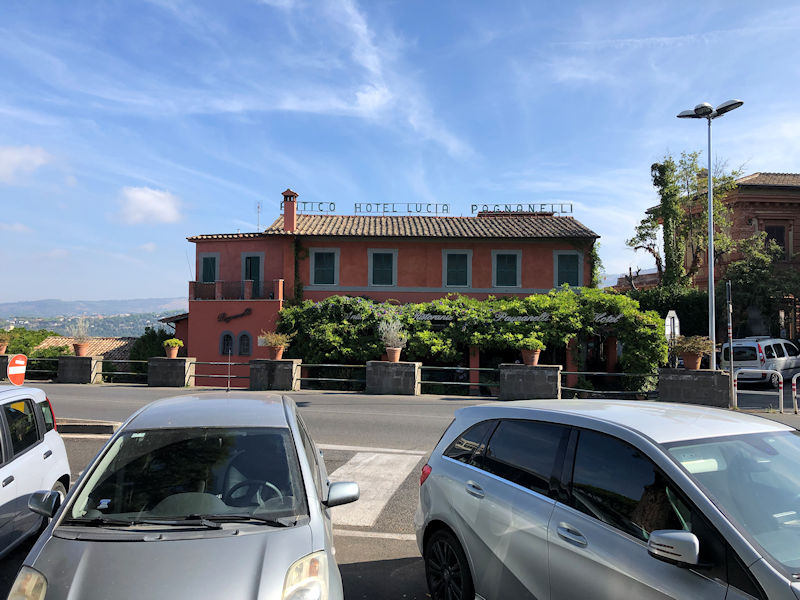
And now it's almost time for another visit to the Pagnanelli.

Some Pagnanelli interiors
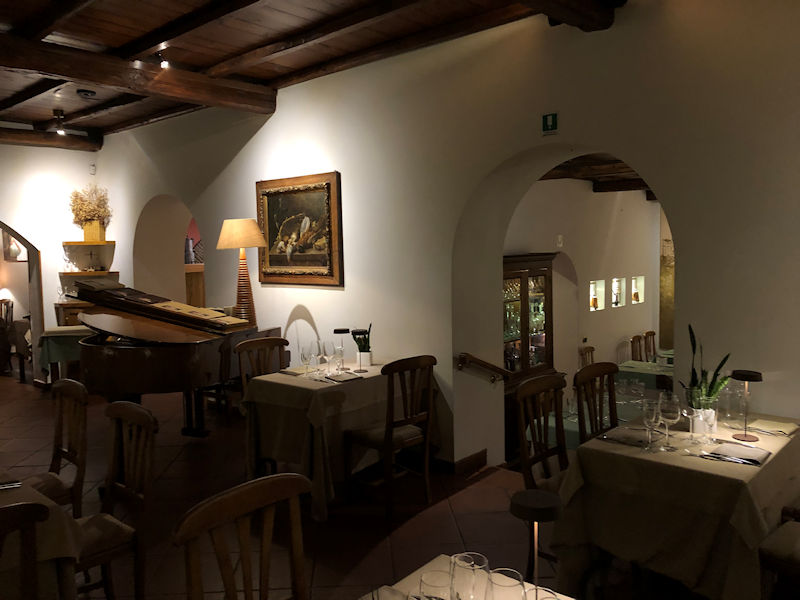
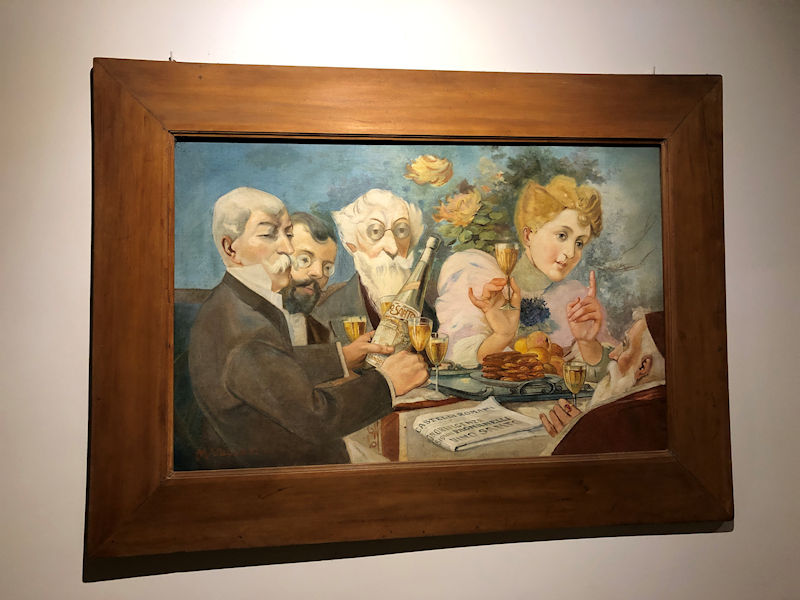
This is a neat sort of symbol of the restaurant and its family past, used in their printed stuff, menus, etc.

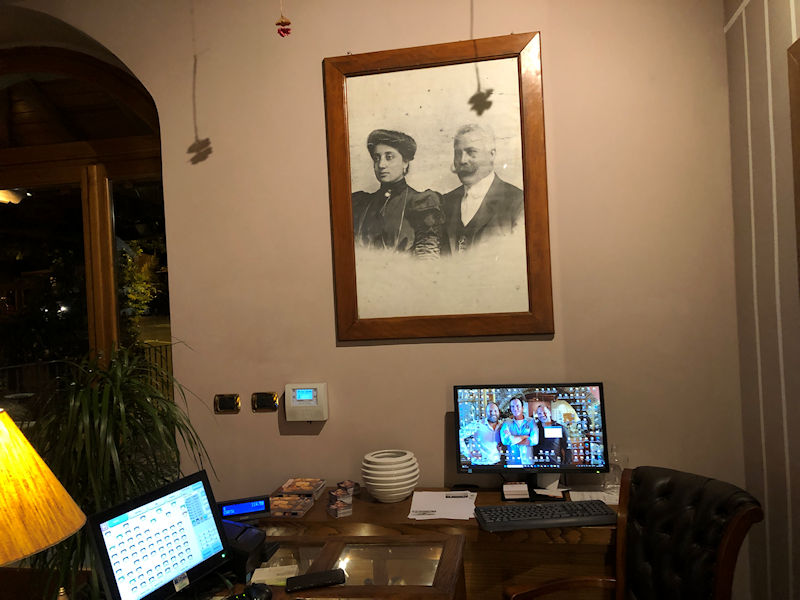
Perhaps a photo of the founders? In any case, the screen background shows the three very friendly fellows, brothers apparently, now running the place.

Making a reservation for tomorrow night, too
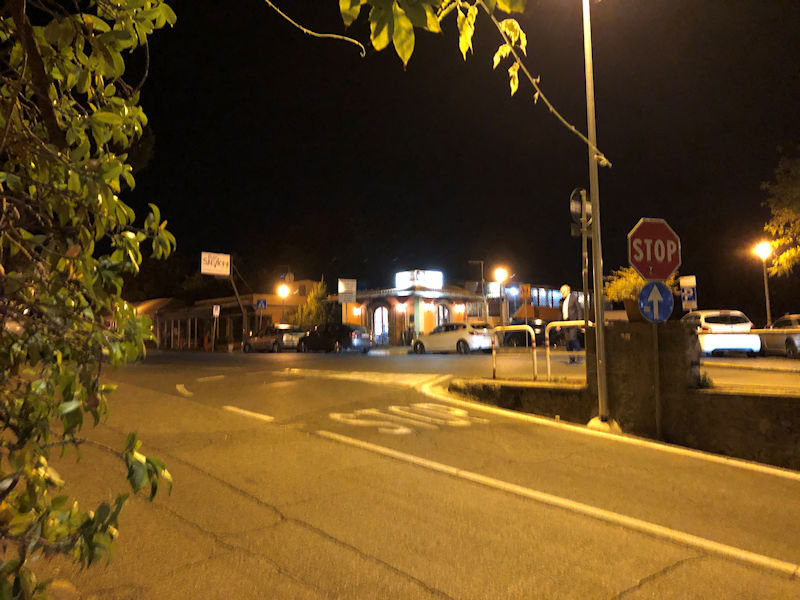
Next up: The Apostolic Palace of Castel Gandolfo, and its gardens


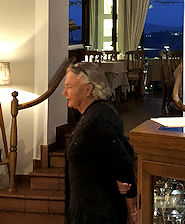 Dwight Peck's personal website
Dwight Peck's personal website











































































